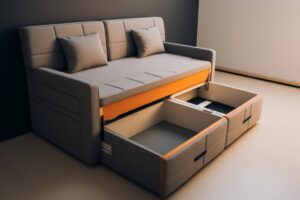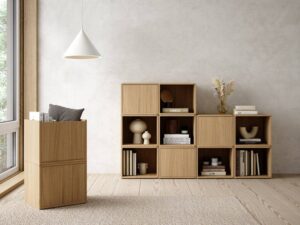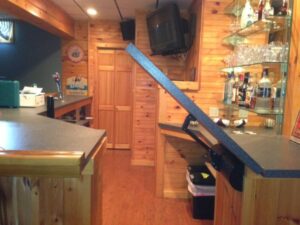The Interior Design Blog
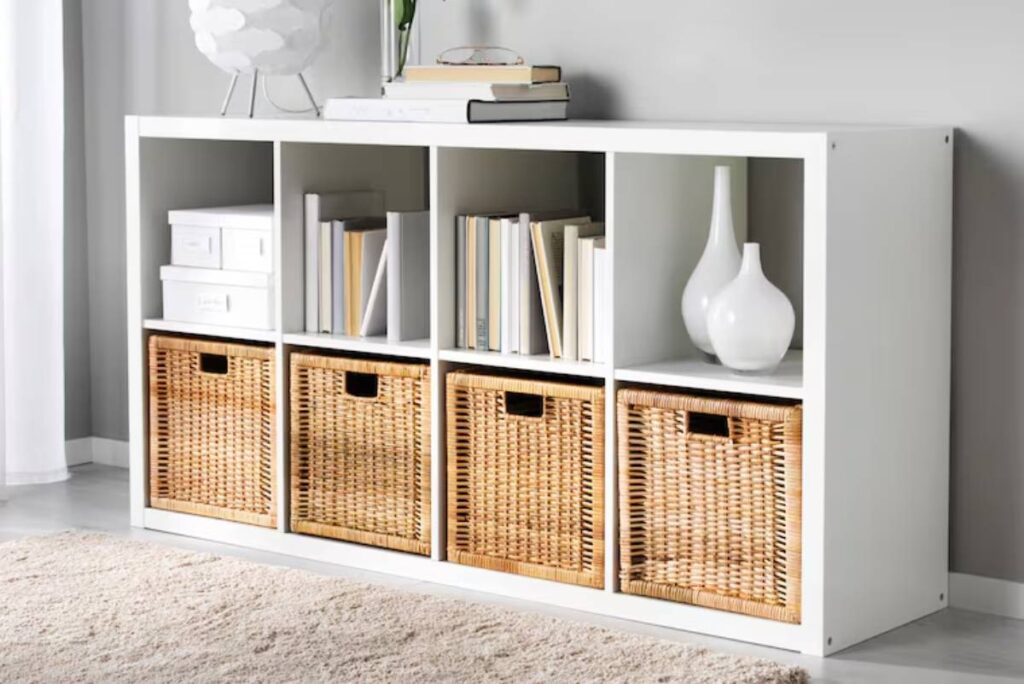
Best Modular Storage Units for Tiny Spaces
If you’ve ever lived in a small flat, studio, or compact house, you know the daily dance — shifting items around just to create space for something else. From stacking boxes under the bed to carefully curated shelves above doorways, storage is the number one challenge in tiny living. And yet, the solution doesn’t have to mean squeezing more into less — it’s about choosing smarter.
This is where modular storage comes in. These flexible, often customisable systems let you build the storage you need based on your space and lifestyle, not the other way around. Whether you’re a minimalist, a maximalist, or something in between, modular units offer the adaptability your home deserves.
In this blog, we’ll break down what modular storage really is, why it’s a dream for small home solutions, and how you can use it to create systems that actually evolve with you. From freestanding cubes to wall-mounted panels, you’ll find ideas that feel personal, practical, and — best of all — possible.
Why Modular Storage Is Perfect for Small Homes
Flexibility to Fit Your Life (and Layout)
Modular storage means units that can be rearranged, added to, or adapted. For small homes, this flexibility is everything. Instead of cramming furniture into a space.
you create a system that grows or contracts based on your:
- Room size
- Storage needs
- Aesthetic preferences
- Lifestyle changes over time
You can stack, hang, slide, or completely redesign without starting over. That’s especially useful in shared homes, rental properties, or when you’re combining a work-from-home setup with a place to relax.
Adaptable to Multiuse Spaces
Most small homes double (or triple) their functions. Your living room might be your gym, office, and guest bedroom. Modular storage makes transitions seamless. Add drawers for gym gear. Incorporate hidden compartments. Slide shelving from one wall to another.
This same mindset underpins other compact strategies like using corner walls for hidden storage potential, where creativity makes limited layouts feel limitless.
Types of Modular Storage Units That Work Best
1. Cube Storage Systems
Cube units are the Swiss Army knives of modular storage.
With uniform dimensions and stackable design, they’re ideal for:
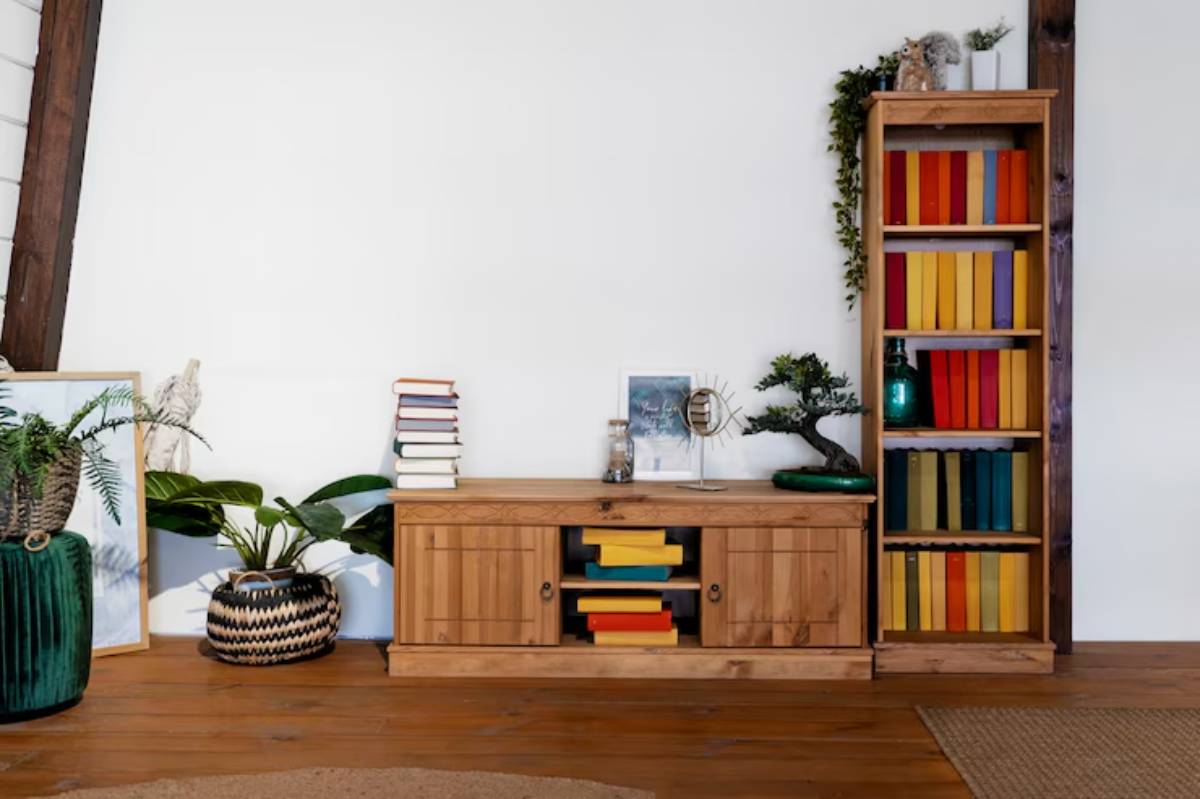
- Living rooms
- Bedrooms
- Entryways
- Kids’ zones
You can add drawers, baskets, or cabinet fronts to customise each cube. Need more? Add another row. Want less visual clutter? Opt for matching fabric bins.
Best for: books, toys, office supplies, clothing, tech cables, and decor.
2. Wall-Mounted Modular Shelving
This system typically uses rails or brackets fixed to the wall, allowing adjustable shelves, drawers, and hangers. They save floor space and offer a streamlined, elevated look.
Use it for:
- Kitchen essentials
- Bathroom toiletries
- Floating desks
- Display walls
These are particularly impactful when paired with clever vertical layouts such as those in how to maximise the area above door frames, where every wall becomes an opportunity.
3. Rolling Modular Drawers or Trolleys
Mobile modular units add function and flexibility. Whether it’s a three-tier trolley in your kitchen or a slim drawer unit beside the bed, they move with you and fit wherever needed.
Perfect for:
- Art supplies
- Kitchen spices
- Bathroom products
- Remote work gear
How to Choose the Right Modular System
Measure First, Then Imagine Bigger
Start with measurements — width, depth, height — and then dream beyond.
Ask yourself:
- Do I need open or closed storage?
- Do I want the system to evolve later?
- Will this need to move or stay anchored?
- Do I want pieces that match or contrast?
Sketch it out or use online tools to visualise combinations. Look for systems with compatible add-ons (shelves, rods, hooks, bins) so you can build gradually.
Consider Materials and Style
Modular doesn’t have to mean “industrial” or “basic”.
Today’s options come in:
- Solid wood and veneer
- Powder-coated metals
- Fabric, bamboo, or rattan insets
- Acrylic, plastic, or mixed media
Opt for neutral tones for cohesion or bold colours for statement setups. Just be sure the style matches the room’s vibe — especially in visible areas like lounges or open-plan kitchens.
Real-Life Modular Storage Examples
In the Bedroom
Use a three-cube bedside tower with fabric drawers to house socks, tech, and reading material. Add a matching under-bed modular drawer system that slides out easily — no need for a full chest of drawers.
In the Kitchen

Mount modular shelves beside your fridge to hold dry goods, chopping boards, or appliances you use occasionally. Add hanging rails for utensils and vertical drawers for cling film, spice jars, or cleaning sprays.
In the Living Room
A low modular bench unit serves triple duty — media console, book storage, and extra seating. Add cushion toppers and baskets below for blankets or board games.
Making Modular Look Intentional
Keep It Uniform — but Not Boring
Use repeating colours or textures to bring cohesion, even if your system is mix-and-match.
For instance:
- All-white cube storage with fabric baskets
- Natural wood shelves with black metal brackets
- Clear bins labelled with matching fonts
You want the system to feel integrated, not like an afterthought.
Anchor It with Design
- Add lighting (LED strips under shelves)
- Style visible sections with plants, books, or frames
- Use rugs or artwork to “ground” modular setups visually
When storage looks styled, it becomes part of your decor, not just a function.
Maintenance and Flexibility Tips
Modular storage is meant to be easy to live with. Make it even better with a few habits:
- Reassess your layout every season
- Label everything for clarity and consistency
- Use clear bins or baskets for small-item categories
- Dust surfaces regularly to maintain a tidy appearance
- Avoid overstuffing — breathing room makes everything feel more peaceful
Avoiding Common Mistakes
- Buying before measuring: Always check the fit in your space first.
- Over-customising without future flexibility: Leave room for the system to adapt.
- Ignoring weight limits: Some wall-mounted systems only support light loads.
- Mixing too many styles: Creates a cluttered, disjointed look.
Stick with one or two finishes per room, and balance open vs closed compartments for the right blend of function and visual flow.
Conclusion: Modular Storage, Maximum Living
In a world where space is precious and flexibility is key, modular storage offers freedom. The freedom to grow, to shrink, to change, and to make your home work for you — not the other way around.
Whether it’s a tiny kitchen, an oddly shaped loft corner, or a studio that needs to multitask all day, customisable home storage helps you stay organised without adding stress or compromising on design. You choose the pieces, the purpose, and the layout.
So if you’re tired of tripping over clutter or rearranging furniture to fit your life, maybe it’s time to flip the script. Start building a storage system that’s as flexible, stylish, and intentional as you are.



